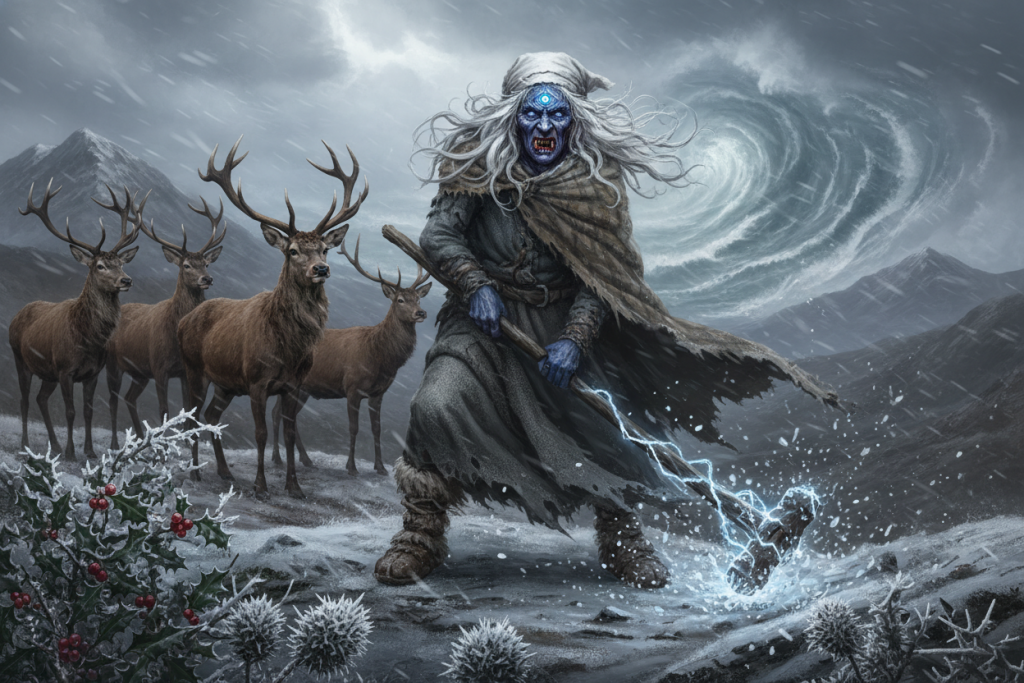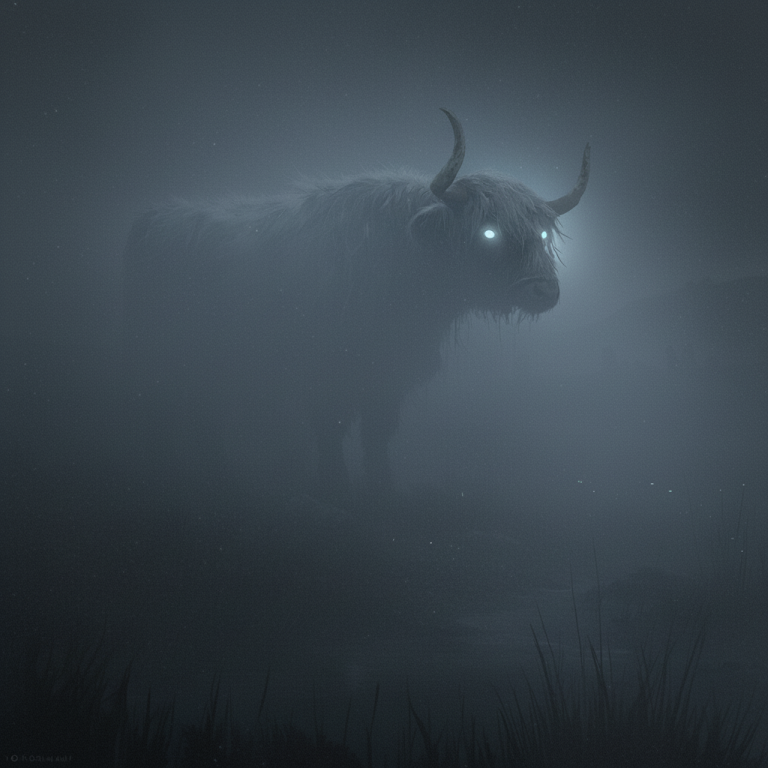Name pronunciation:
Wool‑ver
General Information:
The Wulver is a wolf‑headed humanoid said to live on the Shetland Islands in Scotland. It is often described as a kind and generous creature, unlike the violent werewolves common in folklore. Though it resembles a werewolf, the Wulver does not change shape and is not affected by the phases of the moon.
Local stories portray it as a peaceful being that keeps mostly to itself but occasionally helps humans. The Wulver is said to fish in coastal waters, leaving some of its catch for poor families or lost travellers. Recent research, however, suggests the myth may have modern origins rather than being an ancient Shetland belief.
Appearance:
The Wulver is described as a creature shaped like a man but covered in short brown fur, with the head of a wolf. Standing upright, it has human‑like hands and a strong build. Despite its frightening appearance, it is not regarded as dangerous. Its face is often imagined as calm or intelligent, not snarling or beastly.
Habitat:
According to tradition, the Wulver lived in a cave dug into the side of a hill, about halfway up the slope. In Shetland lore, there is even a spot known as the “Wulver’s Stane”, a rock out in deep water where the creature was said to sit for hours, fishing for sillaks and piltaks (types of fish). This connection with the coast and open water shows the Wulver as a solitary yet peaceful part of its landscape.
Behaviour:
The Wulver is known for being kind‑hearted and generous. It fished regularly and was believed to leave a few of its fresh catches on people’s windowsills, especially for poor families. It would also guide lost travellers back to safety. The Wulver did not harm anyone unless provoked, suggesting that it valued peace and respect. These traits make it a unique figure among wolf‑type beings in myth.
Shape-shifting Ability:
Unlike a werewolf, the Wulver cannot and does not transform. It is said to have always been part‑man, part‑wolf. This sets it apart from many shapeshifters in Celtic and Scottish mythology. It is not cursed, bitten, or infected; instead, it simply exists in this permanent hybrid form.
Variant:
There are no known historical variants of the Wulver legend from other regions. The creature is unique to Shetland, and its story stands alone among Scottish myths. In wider folklore discussions, the Wulver is sometimes compared to gentle nature spirits or guardian figures rather than to dangerous beast‑men.
Location in Scotland:
The Wulver is connected mainly with the Shetland Islands, located in the far north of Scotland. The specific sites mentioned in stories include a fishing rock called the “Wulver’s Stane” and hillside areas known as “Wulver’s Hool” or “Wulvershul”, which appear in old Shetland place names.
Stories, Sightings or Experiences:
The Fisherman of the Wulver’s Stane
One of the best‑known stories about the Wulver describes how it spent long days fishing from a small rock in deep water, later called the “Wulver’s Stane”. Locals said the creature fished quietly and always caught enough to share. Many poor families told of waking to find fresh fish on their windowsills, believing the Wulver had left them there as a gift.
The Kind Guardian of Lost Travellers
Another common theme is the Wulver’s willingness to help lost travellers. When someone wandered off the path in fog or darkness, the Wulver was said to appear and guide them safely back home. It never asked for thanks or reward, simply disappearing again into the hills.
The Real Story Behind the Shetland Wulver
Modern research suggests that the Wulver story may not be ancient folklore after all. In the late 1800s, the Faroese scholar Jakob Jakobsen collected Shetland place names and noted several with “Wulver” in them. He explained that the word came from old Norse and actually meant “fairy hill”. A Shetland folklorist named Jessie Saxby later misunderstood this and, in her 1933 book Shetland Traditional Lore, created a fictional creature called the Wulver to match the name.
Local historian Brian Smith and others have shown that there is no record of a wolf‑man legend in Shetland before Saxby’s writing. Over time, however, her story spread and took on a life of its own, leading many people to believe the Wulver was genuine folklore. The legend remains popular online and in modern retellings, even though its roots may lie in a literary invention rather than old oral tradition.
Purpose of the Myth or Legend:
The tale of the Wulver serves two purposes. Firstly, it highlights kindness within mythology, offering a rare example of a wolf‑like being that is peaceful and generous. This challenges the usual image of wolves as symbols of danger or evil. Secondly, the modern story of how the Wulver came to be reminds us how folklore can evolve. It shows how a simple misunderstanding or creative twist can give birth to a myth that feels timeless.




